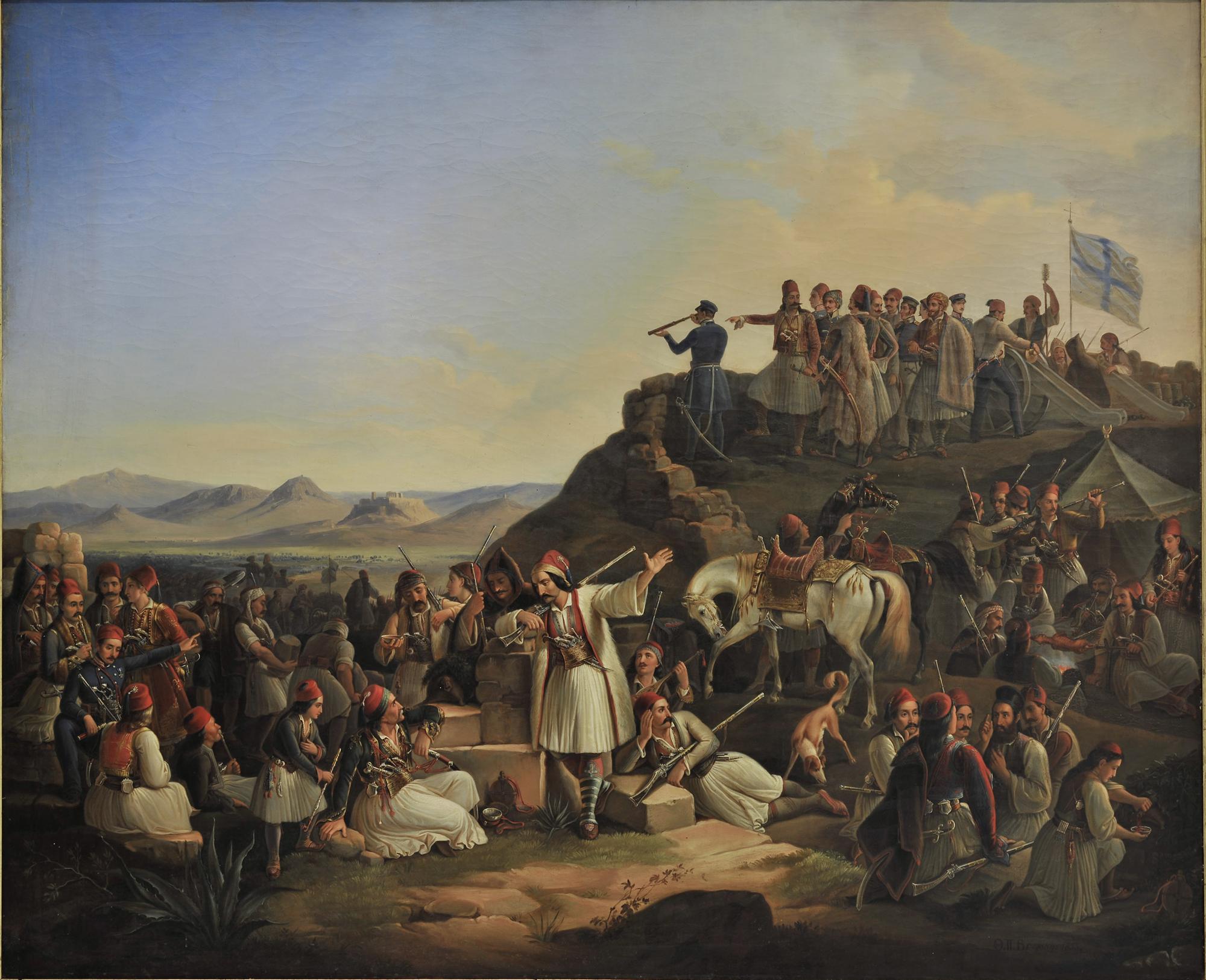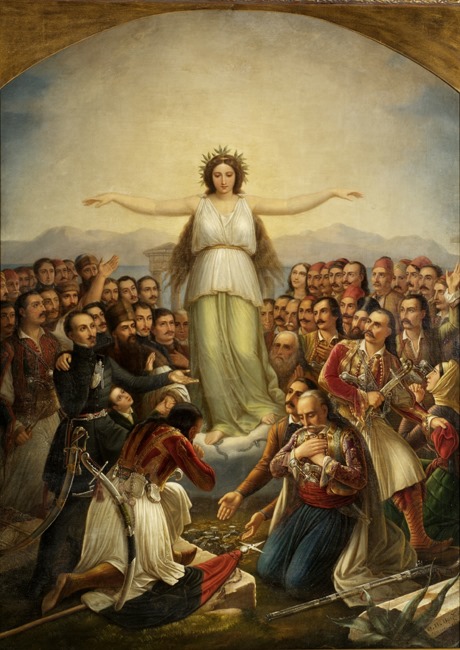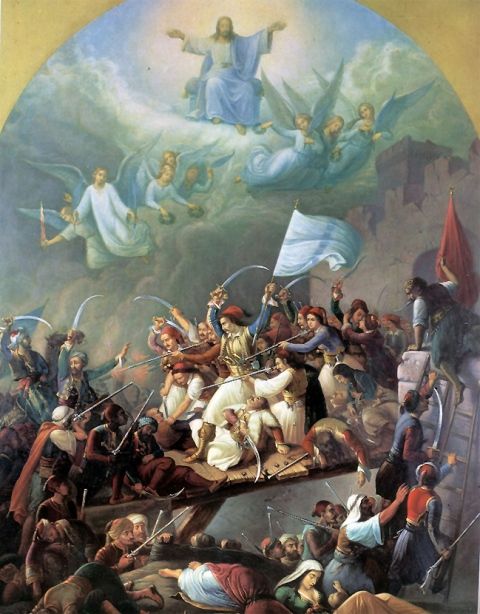I felt little interest when at the age of 12, my mother showed me some paintings depicting scenes from the Greek War of Independence made by her great uncle Theodoros Vryzakis.
At that age, I was more interested in Madonna, my dramatic poetry about unrequited love, and whether I’d pass my maths test. Several years later I found myself standing in front of one of my relative’s masterpieces; a giant canvas presenting a complex battle scene. This time I was a little more impressed, and let my eyes dance across the painting to observe the eyes, costumes, and actions of those depicted. But even then, to me, it was just a painting that left me with a delicate twinge of pride that it had been created by someone in my family. It took around 20 years more for me to truly and deeply value the incredible works of Theodoros Vryzakis, whose works are now on show in a permanent exhibition in the New National Gallery, and who through his striking historical depictions have immortalized the valiant and triumphant battle of Greeks against the tyrannical Ottoman Occupation of hundreds of years.
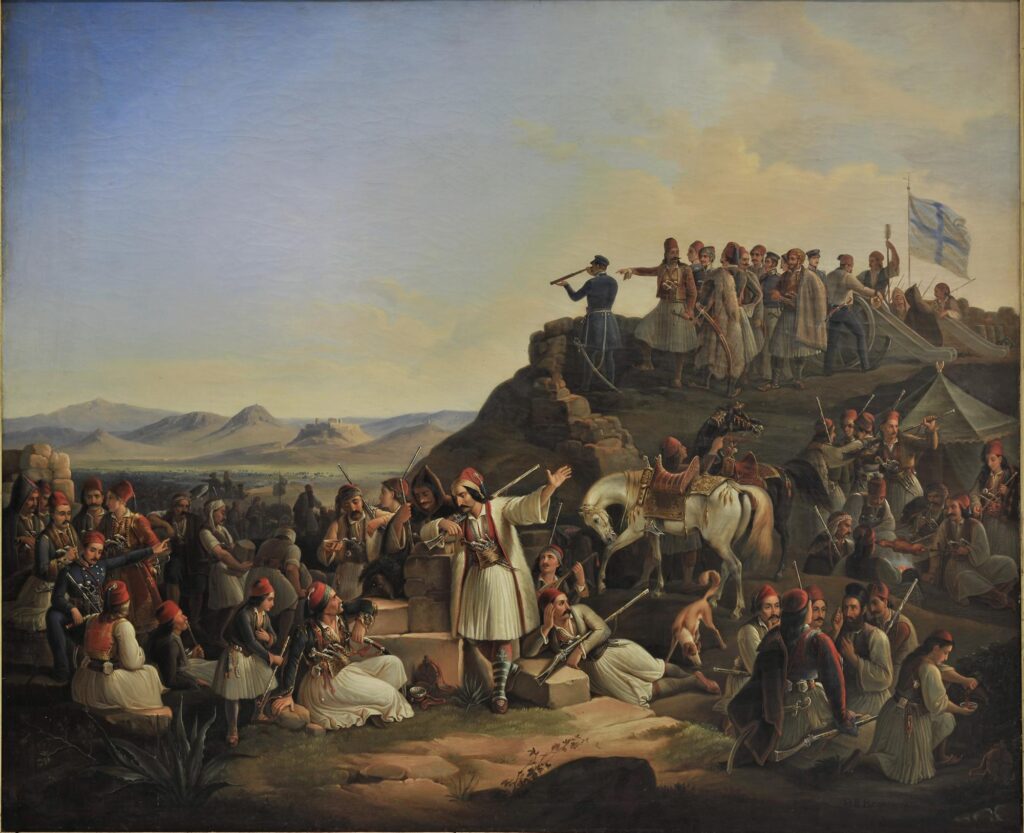
Instead of presenting the Greeks as victims, Vryzakis conceived of a heroic alternative, centering on the valour and vision of his people, from leaders such as Karaïskakis and Makriyannis to the common men and women who gave their life for their country. Also noted in his art was the nostalgic realism with which he presented his figures – with no facial contortions or exaggerated movements. Within many of his works, one can note the bond between the ancient Greek heritage of the nation, such as in ‘The Encampment of Karaïskakis’ (1855), in which the heroes of the revolution are looking towards Acropolis. The omnipotent presence of God, protecting, guiding, and waiting to receive the Greeks in their struggle for freedom can also be seen in some of his paintings, such as The Exodus from Missolonghi (1853).
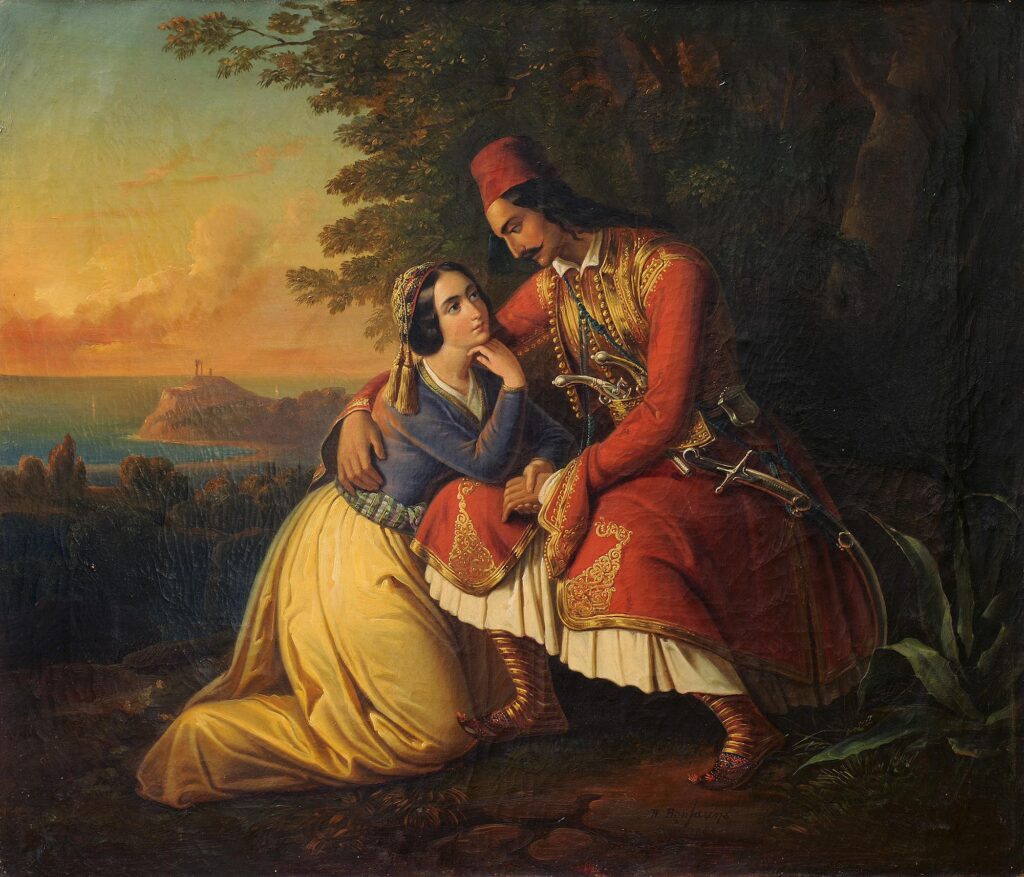
Many of Theodoros Vryzakis’ works are rich with detailed side-scenes that offer profound supplementary messages to the viewer. His artworks led him to receive notable awards during his lifetime, like the First Prize at the International Exhibition of Vienna in 1853 for “The Sortie from Missolonghi,” and a Silver Prize at Olympia in 1870 for his lithograph “The Encampment of Karaiskakis.” His painting ‘I Hellas Evgnomonousa’ (1858) has become a symbol of the Greeks’ triumph over their oppressors, depicting a young woman in a white gown, wearing a wreath on her head, having broken the chains of slavery and rising over the fighters who bow at her feet or look adoringly up at her.
In 1861, Theodoros Vryzakis received a commission to paint icons for the Church of the Annunciation in Manchester, the first Greek-Orthodox church in the UK. A few years later he participated in a major exhibition at the Galerie Del Vecchio in Leipzig. In his final years his painting lessened as his eyesight deteriorated, until he passed away in 1878 due to heart disease, on the very same day as he was born, January first.
Today, as Greece celebrates two hundred years of freedom from an Occupation that began in the mid 15th Century, I can’t feel anything more than pride for my people and for my relative, who immortalized their unity in overcoming terrible oppression. Sometimes it takes maturing a little to be able to see beyond the superficiality of daily life and feel an almost unsettlingly touching understanding of the big picture.

